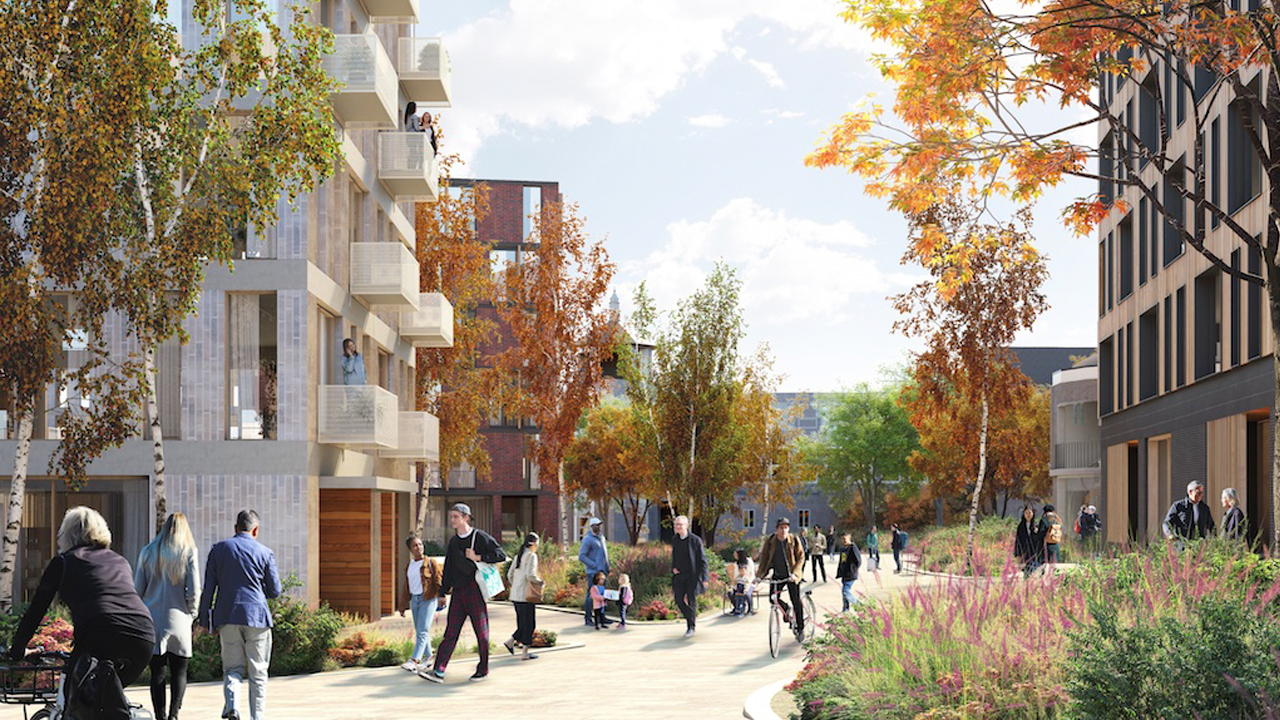After striking an agreement with the city this spring and reaching a settlement at the Ontario Land Tribunal in the summer, Markee Developments, a company co-founded by former Toronto chief planner Jennifer Keesmaat, expects to finally break ground on its first ever housing project next year.
Markee’s project, marketed as Tyndale Green, includes 1,510 units spread across 12 buildings at 3377 Bayview Ave., between Steeles Avenue East and Cummer Avenue. It is a collaboration with Tyndale University, the north Toronto private Christian university that is providing the land.
“It’s been incredibly exciting and challenging,” Keesmaat told
StreetsofToronto.com of the project’s recent landmark. Some of those challenges, she explains, have been higher interest rates that lead to ballooning building at a time when Toronto’s housing crisis is only getting worse. “The sense of urgency for me has just become more apparent.” (Before getting shovels into the ground, Markee still needs approval on a site plan application as well as to obtain building permits.)
The initial proposal, submitted in June 2021, was for a 15-building development of roughly the same number of units but entirely comprised of rental apartments, with 50 per cent of the suites dedicated for affordable housing. However, the green-lit plan sees about a third of the units converted to condos and the overall share of affordable apartment drop to approximately 16 per cent.
A year-long delay with the OLT, coupled with rapidly rising interest rates, unfortunately resulted in fewer affordable units penciling, Keesmaat suggests. “[During] that period, where this was sitting at the OLT, there were 10 interest-rate hikes, so our borrowing costs in that time period for the overall project went up by $76 million,” she said.
Post City contacted the Bayview Woods Neighbourhood Association — whose members had previously been
vocal in their opposition to the project — but did not hear back as of publishing.
Markee had appealed the development to the OLT in March last year after the city did not respond to the zoning and official plan amendments within the time frames laid out in provincial policy.
“It was not a simple approvals process,” said Keesmaat. “There were some bad-faith actors from the community who came forward in the process who quite frankly just didn’t want any new housing in the city.”
To Keesmaat, though, her development establishes the kind of new family-friendly community that the city needs more of. A café and market are going to be located in the heart of the site, and Tyndale Green will also include a daycare facility and two public parks, including a 2.7-acre green space fronting Bayview. That large park is an example of some of the positive changes that came from discussions with the city, says Keesmaat. The first plan, she notes, had only incorporated privately owned public space.
“All of the input from the city was incredibly valuable and useful. It made the plan stronger, which is always the best-case scenario when you have a very collaborative dynamic,” said Keesmaat.
While the site’s tallest towers reach heights of 24 and 15 storeys, respectively, the rest are 10 storeys or shorter, with most between six to eight storeys. “We’re really passionate about the gentle density.”
At least some housing advocates are glad that Tyndale Green can move ahead, but they also express disappointment at delays that they say resulted in less affordable housing getting delivered.
“We’re really happy to see this project proceed,” said Mark Richardson, technical lead at HousingNowTO, a volunteer organization that tracks affordable-housing developments in Toronto. “But we did leave over 500 units on the table because our processes are broken,” he added.
